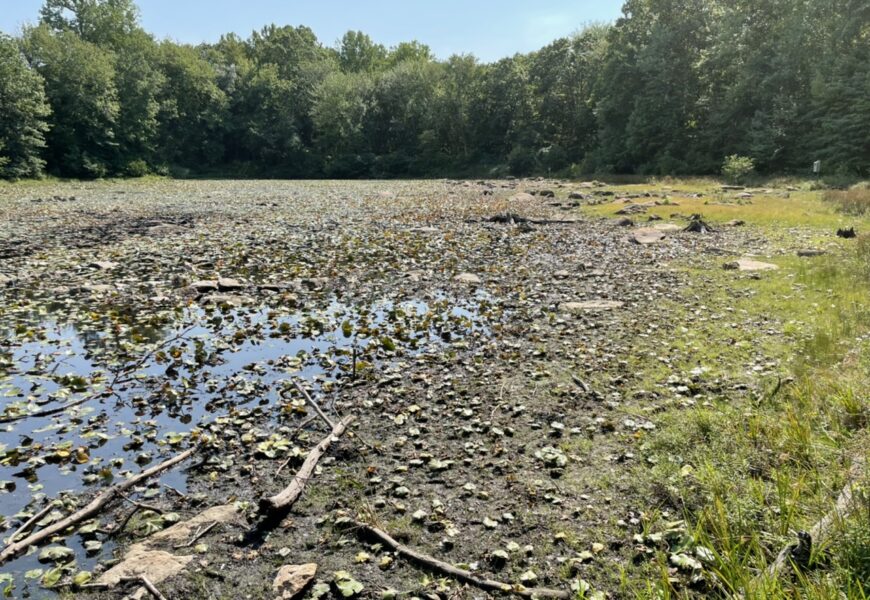While many parts of the nation have experienced heavy rain and flooding this summer, much of southern New England and the state of Connecticut has experienced severe drought.
In July, Connecticut Governor Ned Lamont declared Stage 2 Drought conditions in all eight counties of the state, citing precipitation across the state to be “below normal.”
Stage 2 is the second of five stages under the state’s drought plan adopted in 2018. According to the plan, Stage 2 “identifies an emerging drought event potentially impacting water supplies, agriculture, or natural ecosystems.” By declaring Stage 2 Drought conditions, Governor Lamont put the state on alert and notified the importance of being conscious of the potentially harmful effects.
However, just a month later, Governor Lamont declared Stage 3 Drought conditions in the New London and Windham counties. In his declaration, the governor cited pronounced precipitation shortfalls, reduced groundwater levels, stream flows, and soil moisture impacts as justification for the move. According to the Governor’s statement, the elevation in stage level was made following “an assessment of indicator data monitored by state and federal agencies, including precipitation, surface waters, groundwater, reservoirs, soil moisture, vegetation, and fire danger conditions.”
The impact of the drought has been felt throughout campus and is arguably most evident in the College’s arboretum. Due to the lack of rainfall, many parts of the arboretum’s pond have dried. Where water once filled the pond, it has given way to mud. In addition, many of the streams in the arboretum have almost completely dried. Tiny foot-sized puddles now dot many of these streams which once flowed with water.
Additionally, the impacts of the drought have been felt throughout New London county. In Salem, Provider Farm owner Hannah Tripp told Yahoo News that as a result of the drought she had to “prioritize certain crops over others.” As a result, she believes that she’ll lose the fall crops she planted. In Mystic, Whittle’s Willow Spring Farm co-owner Rick Whittle told FOX61 that he had to irrigate water for their crops from a nearby pond to water his corn fields.
Due to the severe drought conditions, the US Department of Agriculture designated New London and Windham counties as primary natural disaster areas. This allows farms in the counties and neighboring “contiguous counties” to be eligible to apply for federal loans and financial assistance to help cover losses.
Despite the recent heavy rainfall, conditions have not changed in the arboretum, and the state of Connecticut remains in a drought. The National Integrated Drought Information System (NIDIS) lists the county of New London as having “severe drought” conditions.
Conditions aren’t expected to improve soon either. The drought is expected to continue through the fall according to the National Weather Service’s Climate Prediction Center.
This isn’t the first time the region of New England, including the state of Connecticut, has been impacted by a summer drought. According to the NIDIS, droughts have now occurred in 2016, 2017, 2020, 2021, and 2022 in New England. Vandana Rao, director of water policy in Massachusetts, told PBS she attributes this rise in frequency of summer droughts to climate change. She hopes this is “maybe one period of peaking of drought.” However, “it could just be the beginning of a longer trend.”
In an effort to combat the ongoing drought conditions, Connecticut’s Interagency Drought Workgroup recommends communities to try to conserve water by reducing the extent of watering lawns and athletic fields if possible, taking shorter showers, and running dishwashers and clothes washing machines with full loads. While it isn’t certain when the drought will end, we can all help by being conscious of our use of water and trying to conserve to the best of our abilities.









